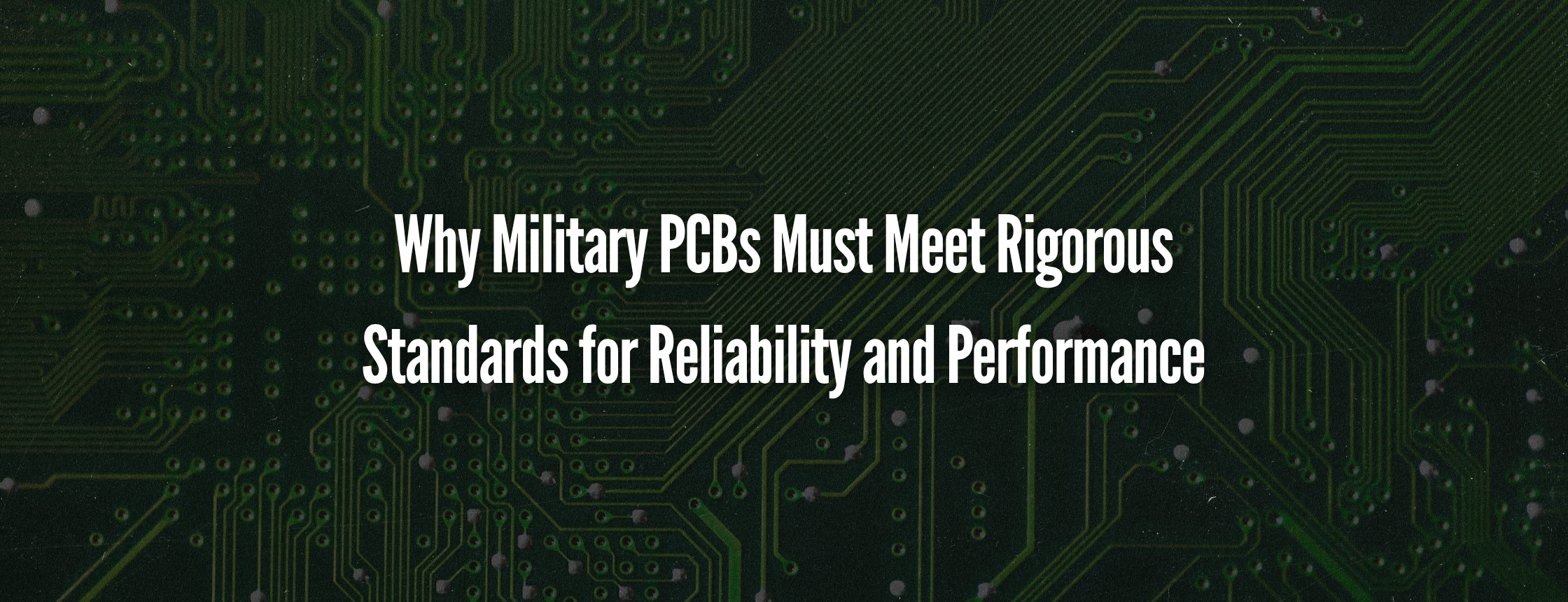Single-Sided vs. Multi-Layer PCBs: What’s Best for Your Application?
Printed circuit boards (PCBs) are the foundation of nearly all electronic devices. From consumer and military electronics to industrial machinery, choosing between single-sided and multi-layer PCBs is crucial in determining functionality, cost, and performance. Selecting the right PCB design for your project requires a clear understanding of its application, design complexity, and manufacturing considerations.
Here are a few differences, benefits, and considerations of single-sided and multi-layer PCBs to help guide your decision.
What is a Single-Sided PCB?
A single-sided PCB, consists of a single layer of conductive material, such as copper, on one side of a non-conductive substrate. Components are mounted on one side, while conductive traces on the other form electrical connections. Single-sided PCBs are widely used due to their affordability and simplicity in manufacturing.
With fewer materials and a straightforward manufacturing process, single-sided PCBs are more budget-friendly than multi-layer alternatives. Additionally, their simple design makes assembly, testing, and repairs much more manageable. Single-sided PCBs are often used in high-volume production, where minimizing costs and simplifying fabrication are essential.
What is a Multi-Layer PCB?
A multi-layer PCB contains three or more layers of conductive material, separated by insulating layers known as dielectric layers. The layers are then laminated together to form a compact board with complex routing capabilities. The additional layers allow for more connections within a smaller footprint, making them an excellent choice for high-performance and space-constrained applications.
Multi-layer PCBs offer higher circuit density, improved signal integrity, and reduced electromagnetic interference (EMI). Their layered design enhances durability and provides greater flexibility in complex circuit layouts.
Key Considerations When Choosing Between Single-Sided and Multi-Layer PCBs
Design Complexity
A single-sided PCB may be sufficient if a simple circuit does not require intricate routing. On the other hand, a multi-layer PCB is better suited for designs that demand multiple connections and higher functionality within a limited space.
Cost Constraints
A single-sided PCB is generally more cost-effective due to its straightforward fabrication process. Multi-layer PCBs, however, involve higher manufacturing costs because of the additional materials and complexity in production.
Space Limitations
A single-sided PCB might be a practical choice if space is not a concern. However, in compact devices where reducing size is critical, a multi-layer PCB offers a practical solution by providing more connectivity within a smaller footprint.
Signal Integrity and Performance
Due to limited routing options, single-sided PCBs can be prone to electrical interference. Multi-layer PCBs, however, improve signal integrity and reduce electromagnetic interference, making them the preferred choice for high-frequency applications where performance is a top priority.
Thermal Management
Thermal dissipation can be a challenge in high-power applications. Single-sided PCBs may struggle with heat dissipation, whereas multi-layer PCBs can incorporate thermal vias and heat management solutions to dissipate excess heat and maintain performance stability effectively.
Manufacturing Considerations
Fabrication time is another important factor to consider. Single-sided PCBs typically have shorter production times since they require fewer manufacturing steps. In contrast, multi-layer PCBs take longer to fabricate due to additional lamination and drilling processes.
Assembly and testing are also simpler for single-sided PCBs. Because all connections are visible and accessible, diagnosing and repairing faults is relatively straightforward. In contrast, Multi-layer PCBs require more advanced testing methods to verify hidden connections and monitor quality control.
Which PCB Type is Best for Your Application?
The choice between single-sided and multi-layer PCBs depends on your specific project requirements. A single-sided PCB may be the best choice if the application is simple and cost-sensitive. However, a multi-layer PCB is often necessary if the design demands higher performance, compact size, and better signal integrity.
Next Steps
Contact Midwest Printed Circuit Services today for expert guidance on selecting the right PCB for your application. Our team is ready to assist you in designing and manufacturing high-quality PCBs tailored to your needs.









